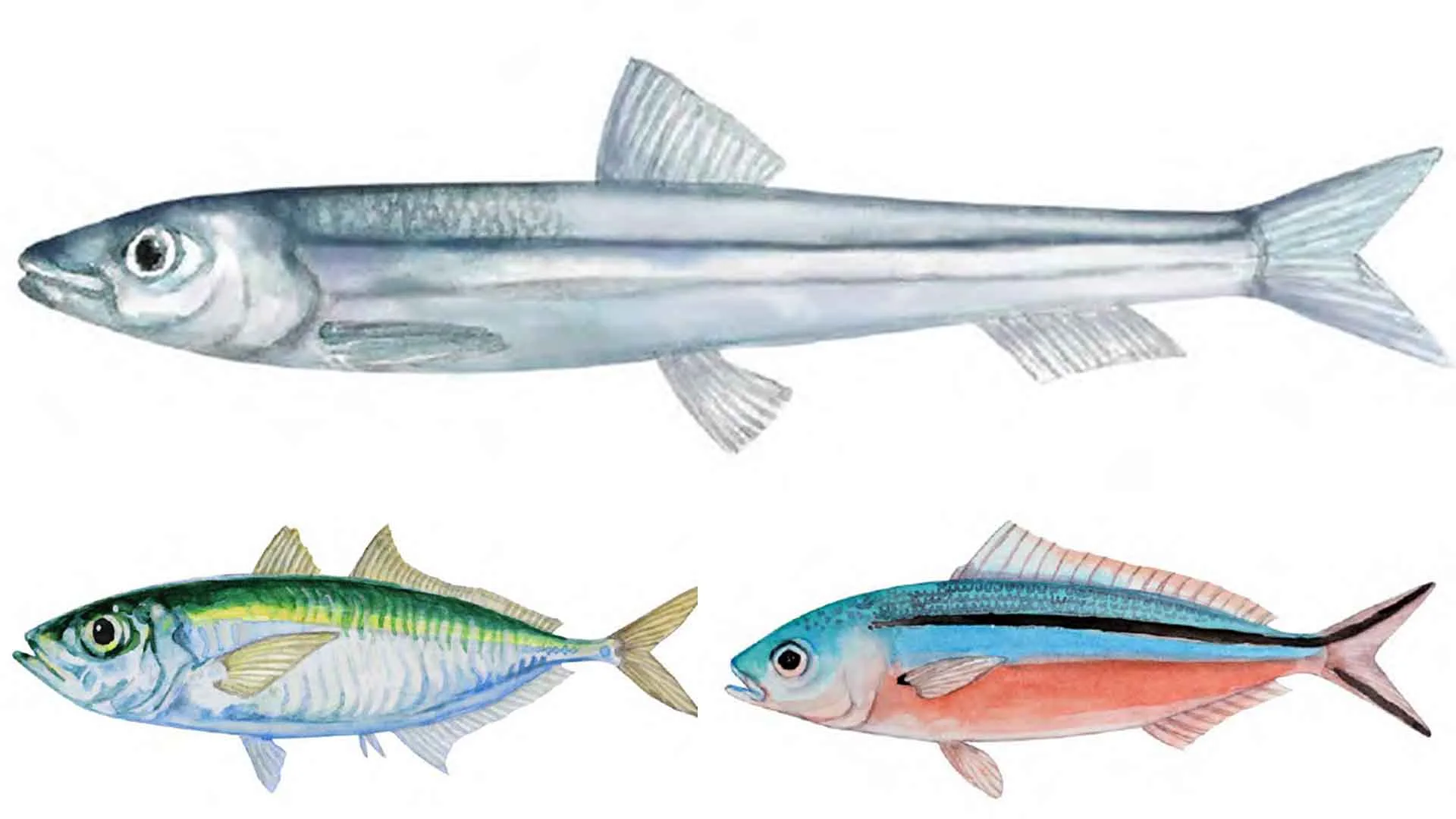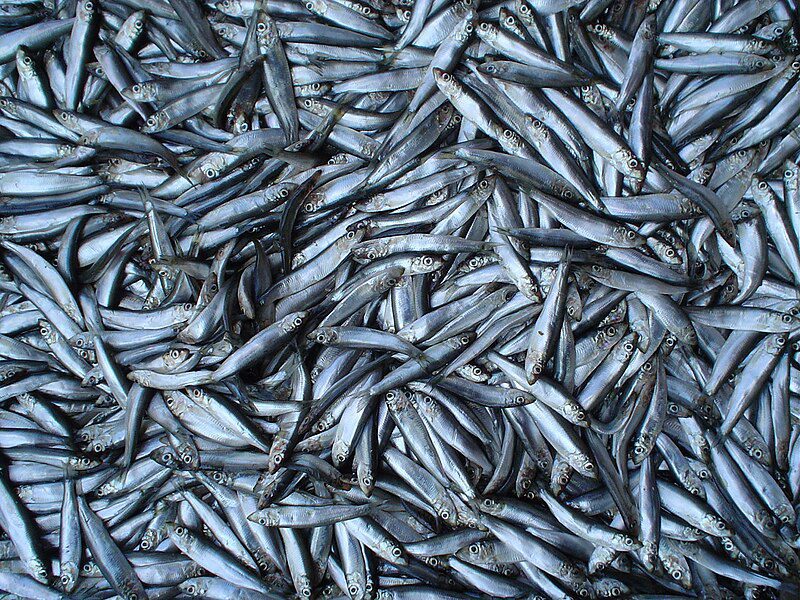
Throughout history, humans have relied heavily on natural baits and methods to catch fish. Despite the use of artificial lures and various spear types, bait fish continue to play a crucial role in fisheries. This trend is particularly evident in the Maldives. For centuries, our ancestors fished for tuna with live bait. Live bait was a valuable resource for catching other fish as well. The Maldives’ primary fisheries activity has been pole-and-line fishing. Many historical accounts indicate that tuna fisheries have existed for centuries. Tuna fishing was common in the Maldives prior to their conversion to Islam (1153).
In The Travels of Moroccan Muslim traveller Ibn Battuta, AD 1325–1354 (Hakluyt Society / H. A. R. Gibb translation), he describes Maldivian tuna. Ibn Battuta stated, “The food of the natives consists of a fish… they call koulb al mâs. Its flesh is red; it has no grease, but its smell resembles that of mutton. When caught at the fishery, each fish is cut up into four pieces and then slightly cooked. It is then placed in baskets of coco leaves and suspended in the smoke. It is eaten when perfectly dry.”
Live bait lands approximately 90% of tuna. The Maldives has 40 different species of small fish used as bait (Anderson, 2009). The silver sprat, also called “rehi” locally, is the most important bait fish. Other popular baits include cardinal fish, fusiliers, anchovies, and blue sprats. The pole-and-line tuna fishery also frequently uses several species of cardinal fish, fusiliers (muguraan), anchovies, and blue sprats. Handline fisheries target large yellowfin tuna and reef fish using various other small fish species as live bait.
Silver sprats (Spratelloides gracilis)

The silver sprat is a small, shiny, fast-moving fish that attracts tuna well. And this is the most popular live bait for pole-and-line tuna fishing. This baitfish is known locally as “Rehi”. This bait fish lives near the shore, usually in big schools inside the atolls. The Maldives has silver sprat all year long. It is the best bait for fishing skipjack tuna. The silver sprat is also very fragile and difficult to keep alive for even one day.
Blue sprats (Spratelloides delicatulus)
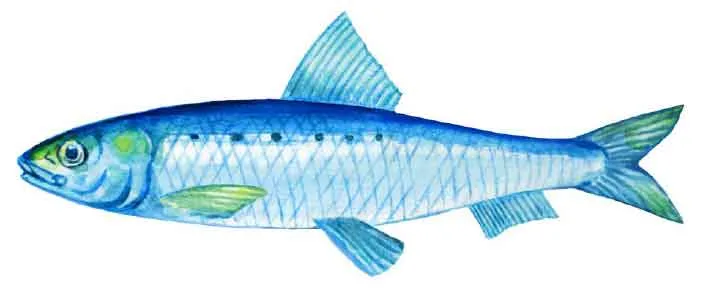
This bait fish is locally called “hondeli” in this area. It looks a bit like a silver sprat but is somewhat smaller. The body is covered with very thin, fine scales. The back of this fish is dark blue, and the sides are silver. This fish doesn’t have the broad reflective stripes that silver sprat do. This pelagic species lives in large groups within atolls and is usually found near the shore. It lives in shallow water during the southwest monsoon and is easy to catch. Like the silver sprat, this species is very fragile and difficult to keep in captivity for long periods of time.
Cardinal fish (Apogonidae)
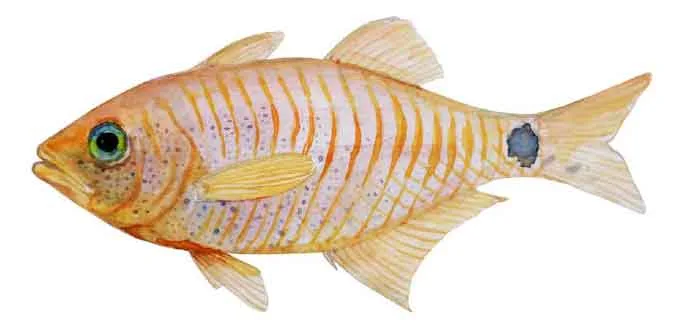
Locally known as “Boadhi” are the names for small red fish that live on reefs, and “fathaa” are the names for small pale fish that live in lagoons. People usually use this bait when they can’t get sprats or anchovies. This bait fish can be kept in bait tanks, as it can survive. They are all different kinds of fish in the family Apogonidae. In deeper water, these fish hide among the corals. As bait, Maldivians use different kinds of cardinalfish, such as the headstripe cardinalfish (himaboadhi), the blackstriped cardinalfish (Fulhaaronguboadhi), the ghost cardinalfish (loabodubureki), and the peppered cardinalfish (thikijehiboadhi). The number of cardinal fish varies from place to place in the Maldives and even from season to season. Cardinal fish can stay in the bait wells of pole-and-line fishing boats for a few days.
Anchovies (Encrasicholina heteroloba)
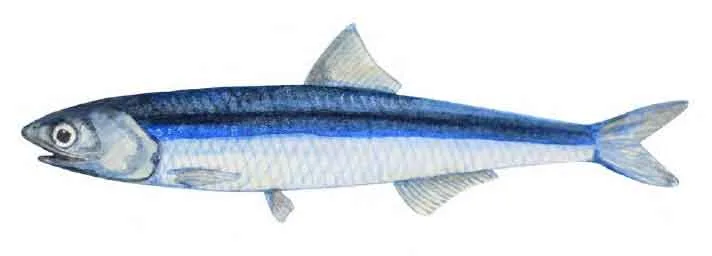
It is often used as bait and can be found in large schools in lagoons and near reefs. We call this bait fish “miyaren”. This species is also a good bait fish to catch skipjack and yellowfin with this bait. The body of this small fish is clear, light, and fleshy brown. It doesn’t have any dark lines on it like the silver sprat does. With its big mouth, it lives near reefs in shallow water and eats plankton. In the southern Maldives and during the northeast monsoon, there are more anchovies. It groups together into big schools and can be caught in large numbers. They are drawn to the bait fishing light that fishermen use at night because it brings in a lot of plankton.
Bigeye Scad (Selar crumenophthalmus)
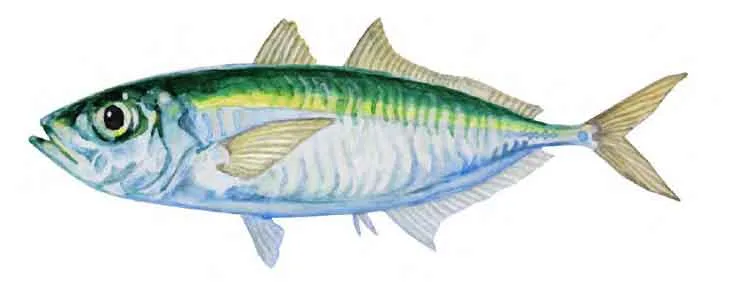
The body of this fish is long and shallow, and its big eye stands out. Its back is metallic blue to bluish green, its belly is white, and there is a big black spot on its operculum. This fish gathers in large groups in shallow water near reefs. Plankton, small fish, and bugs are what they eat. Pole-and-line gear and nets are used to catch bigeye scad both during the day and at night. Reef fishermen and people who handline for tuna often use this fish as live bait. This fish, locally known as “mushimas,” is very delicious to eat.
Red-tooth triggerfish (Odonus niger)
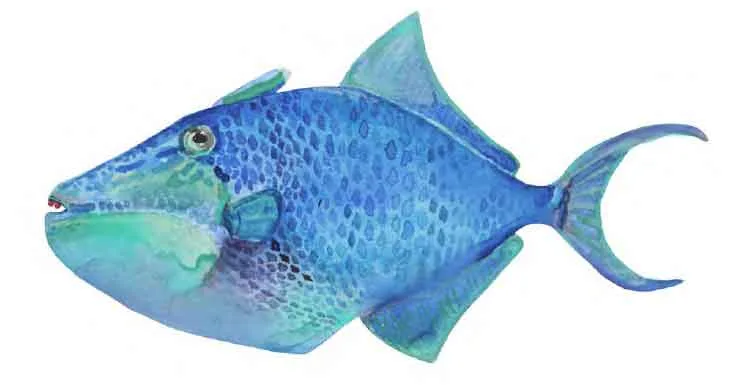
Its tooth is red, and its body is deep blue. Occasionally it’s very dark brown or green. This fish lives on the edge of the reef and eats sponges and zooplankton. A bait net can be used to catch them because they move in groups. When they are scared, they hide in cracks in the reef. People who fish for tuna and reef fish with a handline use this fish as bait. In this area, this species is called “vaalu rondu”. This species is also another bait fish used in handline fishing.
Mackerel scad (Decapterus macarellus).
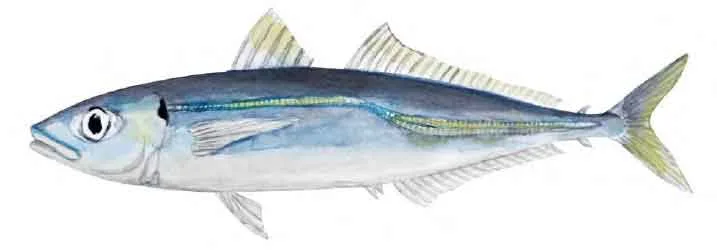
The body of this fish is very long and round. The back fin is blue-green, and the tail fin is silver. The back fin is yellowish-green, and the front and back fins are white. This species lives in open water and feeds on planktonic invertebrates. It usually lives in large groups within the atolls. This fish is often used as live bait for yellowfin tuna and reef handline fish. This kind of bait is called “rinmas” in this area. This bait is also used for fishing with a line.
Fusilier (Caesionidae).
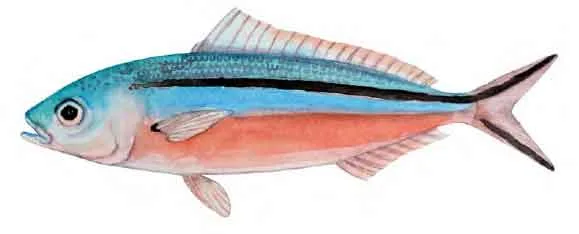
This bait is locally known as “muguraan.” Around six different species of fusiliers are used as bait. Some of these are yellowfin fusilier, gold-band fusilier, banana fusilier, slender fusilier, and dark-banded fusilier. The smaller fusiliers are used in the pole-and-line fishery. The larger ones are used in both the handline tuna and reef fisheries. Muguraan is a very good bait as it can survive. When sprats are in short supply, pole-and-line fishermen target this fish. Fusiliers are abundance in the northern atolls of the Maldives during the northeast monsoon and in the southern atolls during the southwest monsoon.
Note: Some information was taken from the book “The Tuna Livebait Fishery in North Ari Atoll” by Ahmed Riaz Jauharee.
